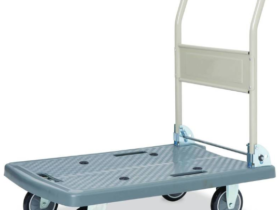Singapore has proven its superiority in the field of Mathematics globally. In this article, we will share some of the insights with you so you can look at Singapore Mathematics from an in-depth perspective. The article aims to answer why what was dubbed as “Singapore Math” is the best teaching strategy for Mathematics among the existing methodologies in the world.
Singapore as a country of Math wizards
Singapore students have bagged the most first-place rankings in The Trends in Mathematics and Science Studies (TIMSS) since its inception in 1995. The study is conducted once every four years. It aims to assess the knowledge of the students in primary and secondary level of the 70 participating countries with regards to Mathematics and Science subjects.
On the first assessment in 1995, Singapore ranked first in Mathematics for both primary and secondary level. After four years, even with the absence of participants from the primary level, the students from the secondary level still managed to bag first place.
The repeat of the 1995 assessment result happened in 2003 wherein both primary and secondary level Singapore students ranked first in the exam. In 2011, the primary level ranked first once again. For the third time, Singapore managed to bagged first place for both levels in 2015 and made a repeat of the performance in the recent 2019 result.
These overwhelming results can give one a glimpse into the capabilities of Singapore students in the field of Mathematics. This can make one wonder what makes our students excel with the way Singapore teaches Mathematics. What is special about this “Singapore Math”?
What is Singapore Math?

Our technique of teaching Mathematics, dubbed “Singapore Math” by other countries around the world, is a little different. The Singapore Mathematics method marked a change in the way math was taught. The program follows a three-step learning technique, moving from concrete to pictorial to abstract (C-P-A).
Concrete
The term “concrete learning” refers to a type of learning that is very similar to the concept of “learning by doing.” It comprises the incorporation of a mathematical topic into an activity that allows the student to better comprehend the lesson. If you’re teaching division to primary pupils, for example, you’ll need to demonstrate to them a practical application of the division process. Students will be able to grasp the concept in its most practical form in this manner. When compared to traditional Math courses in other courses, where issues are strictly numerical and must be answered using equations, this is a radically different approach.
Pictorial
The integration of images and representations on paper, on the other hand, is referred to as pictorial. Although this procedure is related to the physical process, it is more theoretical than practical. It’s done this way so that when the pupils transfer the information from the concrete application to the paper, they’ll remember it. Because the majority of the Mathematics tests they will face in the future will be written, it is only logical to educate students on how to translate their learned knowledge from physical activities into pictorial representations. This procedure reinforces information retention as well as the application of knowledge.
Abstract
In our Mathematics methodology, the abstract process comes last. This procedure necessitates the use of critical thinking and analysis. Students are encouraged to utilize their expertise in this process to solve more complex issues using equations, formulae, and their past practices.
It is very important to note that Singapore’s methodology when it comes to teaching Mathematics is very like the way one teaches his child how to walk or ride a bike. First, you show them how through concrete example (i.e demonstrating how to walk or ride a bicycle in front of them). This is done so they can perceive with their own eyes how the thing works. In a larger sense, it is difficult to understand things using plain imagination. The next step would be to let them try the process using aids (i.e using a walker or training wheels). These interventions allow them to try the process with an assisted freedom. Lastly, they must be able to do the process by themselves, as they have imagined it. This makes the C-P-A process very effective.
Furthermore, Singapore Mathematics is characterized by its emphasis on “mastery”. A study conducted by Lindorff et al. in Oxford University the United Kingdom gave a good definition of “mastery” as used in the subtext of the teaching methodology used in Singapore for the Mathematics subject, that is “a focus on making sure that every pupil secures understanding of a particular concept before moving on to the next”. The study further discussed Singapore Math in the context of Variation Theory, this is specifically about the concrete part of the C-P-A approach wherein the effectiveness of the teaching methodology increases when aided with different samples or related scenarios that the learners can relate to.
One can also give it to the unique methodology of the Singapore education curriculum why the students excel in Mathematics. In our educational curriculum, there are fewer topics per academic year. This lifts the strain off the students and lets them focus on their studies more. Additionally, it allows the teachers to make an in-depth discussion of each topic so the students, even with varying learning capabilities, will be able to absorb the lessons before moving on to the next topic. Not many countries in the world follow this format. Many are trying to fit in several subjects in a semester, with the many workloads for the students, they tend to lack mastery.
The “spiral system” or “building blocks system” that is often used to describe Singapore Math in other countries is also the reason why our methodology is different. In a building blocks system, the topics are fixed by level. However, it is also called spiral in the sense that not because a student stepped over a topic, doesn’t mean studying the topic is over. A spiral system works in such a way that the topics that are already discussed will be revisited in the next level with more advanced learnings. This way, the students will retain the knowledge through continuous application of the concepts with the difficulty increasing as they move up the academic ladder.
The Common Core State Standards

The Common Core State Standards have been implemented by several states across the world since 2010. Even if students transfer to another school or move to a different state, having the same standards helps them achieve the same quality education. The Common Core State Standards were created by teachers, parents, and education specialists to prepare children for success in college and the real world.
Singapore is among the countries that adopted the Common Core State Standards in mathematics subject. Thus, it is crucial to look into these standards to understand Singapore Math better. Here’s a brief explanation of the common core standards in Mathematics:
1. Students must seek to answer problems
Critical thinking is deemed as an essential skill that must be learned in school. Thus, students need to develop an initiative to persevere in solving mathematical problems as a practice of critical thinking.
2. The subject must improve the student’s reasoning skills.
One of the goals of the mathematics curriculum is for the students to develop their reasoning skills. They must be able to communicate their reasoning in class or to other people.
3. The students must develop skills to help scrutinize the presented information.
Aside from developing the student’s reasoning abilities, the curriculum must also hone the student’s ability to participate in a constructive argument with his fellow students to reach an in-depth understanding of the topics.
4. Mathematics must be practical.
Another important aspect of the common core standards is that it seeks to make mathematics as practical as possible. Students must be able to apply the concepts of the subject in real-life situations.
5. Employment of different learning tools
It is also encouraged for teachers to use learning tools that will be effective in the students learning journey. Aside from the regular textbooks, the teachers can use other means to teach the subject.
6. Students must display precision.
Precision is the proof of learning. It is a popular saying that, “if one can’t explain it in simple terms, he doesn’t understand it well enough”. This is true in most classroom setups. Therefore, one of the standards is that the students need to develop several students must be able to explain their learning with precision.
7. Students must be able to point out structures
Structures are a relevant concept in Mathematics. Many topics in math have a lot to do with finding a structure and using it as a future reference. Thus, the students must be able to point out structures in a given topic.
8. The students must display mastery of the topics
Since mastery is crucial to Singapore mathematics, the students are expected to display a level of understanding in the topics being taught before jumping into another topic.
The Emergence of Math Tuition Centres
The level of competencies in Mathematics that students possess can also be rooted in the emergence of math tuition centres in Singapore. These learning centres provide more thorough teaching of mathematics subject as a supplementary learning method alongside the existing school programmes.
Tuition centres also offer distinct levels of math tuitions to cater to students with varying learning capabilities. There are O-level Maths, JC H2 Maths, and A Maths Tuition available for the tutees.
What can Math Tuition do to improve a Child’s Performance?
It is a typical question for those who are yet to enrol their kids on a Maths Tuition. While learning inside the school can pass as “education”, having additional learning can greatly improve a child’s academic performance. A maths tutorcan help your child through a focused teaching method that a classroom teacher will not be able to provide.
Tuition centres are especially helpful for students who are struggling with elementary and additional maths. When you started to observe that your child is having difficulty in his mathematics subjects at school, it is time to enrol him in math tuition for the possibility of improvement. More often than not, a student is not bad at the subject it’s just that the learning environment he was in is not the most appropriate for his learning style. In most cases as well, the classroom set-up just wouldn’t suffice the student’s needed attention.
The quantity of distractions in a student’s learning environment is one of the causes of his low mathematics performance. Inside the classroom, the talk of his classmates, the fact that he is unlikely to be called in for a recitation, and the packed environment itself can all serve as distractions that prevent him from paying full attention to the lessons.
When there is a need to clarify something or there are grey areas, learning a Maths topic in a packed classroom can lead to doubt. The student will be able to ask the teacher questions without feeling embarrassed in an A Maths Tuition. This rise in self-assurance may enable him to do better in class.
In a math tuition centre, the learning environment has comparatively fewer distractions as compared to a regular classroom. The student may be taught on a one-on-one or small group basis. Either way, he will have more room to concentrate and keep his full attention to the lessons being taught.
Students may not realize how well they understand the topic until they finish an exam or activity, by that time, the lesson may have shifted to a different issue, and it may be too late to identify opportunities for improvement. This is a common problem in the A Maths class.
All of these problems are typical, especially in mathematics classes. The presence of math tuition centres in Singapore is a key point on why many students can perform well in school despite the distractions. This is why Math tutors are an important part of shaping the overall aptitude of students when it comes to mathematics subject.










